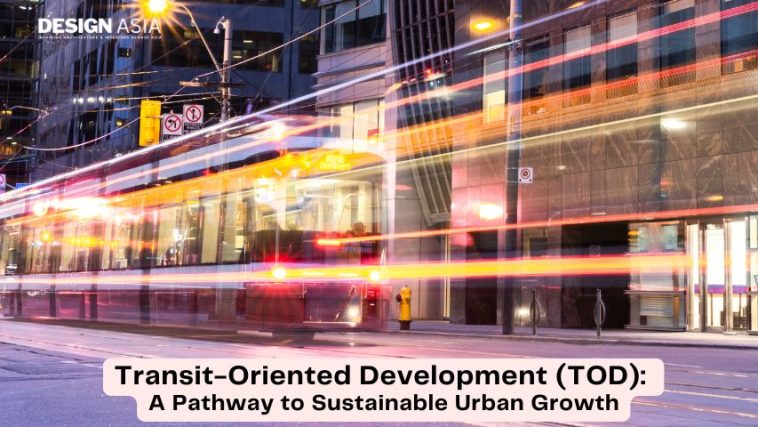Transit-Oriented Development (TOD) is an urban planning approach that focuses on creating compact, walkable, and mixed-use communities centered around public transportation hubs. TOD aims to reduce car dependency, enhance mobility, and promote sustainable urban growth by integrating residential, commercial, and recreational spaces within close proximity to transit stations.
Key Principles of Transit-Oriented Development
- High-Density, Mixed-Use Development
- TOD encourages a blend of residential, office, retail, and entertainment spaces within walking distance of transit stations.
- This mix of land uses increases accessibility and creates vibrant, 24/7 communities.
- Walkability and Pedestrian-Friendly Design
- Streetscapes are designed to prioritize pedestrians and cyclists over vehicles.
- Features such as wide sidewalks, safe crossings, and green spaces enhance walkability.
- Connectivity to Public Transit
- Developments are strategically located around transit hubs such as bus stops, train stations, or metro lines.
- This improves accessibility and encourages the use of public transportation.
- Reduced Parking Requirements
- TOD minimizes parking spaces to discourage car use and promote alternative transportation.
- Shared parking and bike-friendly infrastructure are prioritized.
- Affordable and Inclusive Housing
- TOD often includes a mix of housing types to accommodate diverse income levels.
- Affordable housing policies help prevent displacement and support social equity.
- Sustainable and Green Infrastructure
- Energy-efficient buildings, green roofs, and rainwater management systems are integrated into TOD projects.
- Emphasis on reducing carbon emissions and promoting environmental sustainability.
Benefits of Transit-Oriented Development
- Reduced Traffic Congestion and Pollution
- Encourages the use of public transit, reducing the number of private vehicles on roads.
- Leads to lower greenhouse gas emissions and improved air quality.
- Economic Growth and Job Creation
- TOD attracts businesses and investments, boosting local economies.
- Creates jobs in construction, retail, and public services.
- Improved Public Health
- Walkable communities promote physical activity and reduce health risks associated with car dependency.
- Access to green spaces enhances mental well-being.
- Enhanced Quality of Life
- Mixed-use neighborhoods provide convenient access to essential services, reducing commute times.
- Social interactions are encouraged through community-centered design.
- More Efficient Land Use
- Maximizes land near transit hubs, reducing urban sprawl.
- Preserves open spaces and agricultural lands by promoting compact development.
Challenges of TOD Implementation
- High Initial Investment: Infrastructure development requires significant funding.
- Zoning and Policy Barriers: Many cities have outdated zoning laws that do not support high-density, mixed-use developments.
- Gentrification and Displacement: TOD can lead to rising property values, making housing unaffordable for lower-income residents.
- Public Resistance: Some communities oppose higher-density developments due to concerns about congestion and changes in neighborhood character.
Successful Examples of Transit-Oriented Development
- Curitiba, Brazil – A pioneering example of TOD with a well-integrated Bus Rapid Transit (BRT) system.
- Hong Kong – One of the most efficient TOD models, with high-density residential and commercial developments seamlessly connected to mass transit.
- Portland, USA – A leader in TOD in North America, with light rail systems supporting walkable, mixed-use communities.
- Singapore – A highly successful TOD approach integrating housing, retail, and business hubs around public transit.
Transit-Oriented Development is a powerful strategy for creating sustainable, efficient, and livable urban environments. By prioritizing accessibility, walkability, and public transit, TOD reduces car dependency, boosts economic growth, and enhances residents’ quality of life. While challenges exist, proactive policies and community engagement can help cities successfully implement TOD and pave the way for a greener, more connected future.


